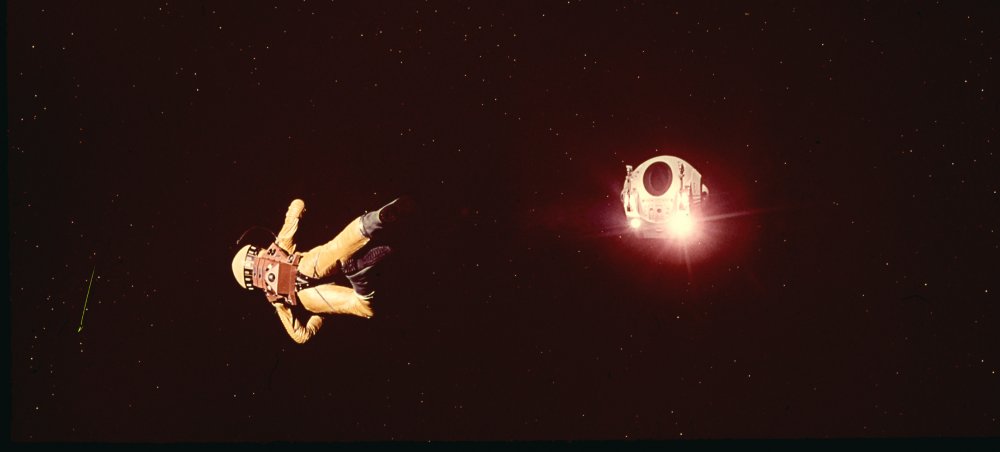Since the advent of cinema both audiences and film makers have embraced the importance of sound and music in film. Initially the lack of recorded sound was supplemented, using title cards and having live orchestras in the theaters. As time passed cinemas started to utilize sound and dialogue to improve story telling in general. Today soundtrack(original or other wise) is a critical part of cinema. But of late most cinemas have procedurized(turned into a formula) the use of silence to a certain number of cliches.
The most notable misuse one can notice is in horror movies where extended moments of silence are usually paired with a profusion of loudness to make the audience uncomfortable and agitated. The other recurring use of silence is to show shock(either literal or mental) in movies like The Pianist(2002) and Saving Private Ryan(1998) sequences involving explosions are usually followed by moments of silence which is symbolic of how the protagonist is reeling from the shock of the battlefield. The same can be seen in One flew over the Cuckoos Nest(1975) where silence is used to the same effect when Frank(the protagonist) gets shocked electrically. While these uses can be justified, the worst misuse is for emotional purposes either to portray either loss or showcasing deep thought.
There are many examples where directors have used silence in innovative ways to improve the quality of story telling. But of them Martin Scorsese has been seen to consistently embrace the concept of silence. One of the best examples of his innovative use of silence can be seen in his 2016 production aptly named Silence featuring Adam Driver and Andrew Garfield. While the movie is majorly about symbolic silence, the silence a believer has to handle before redemption from God, it also resorts to literal silence in many instances to show case this struggle a believer has to face. This also inspired the “2001: A space odessy”esque start of the movie where the audience was treated with minutes of silence whilst staring at a completely blank screen.
Another way the movie was unique was its use of minimal external music and soundtrack. Experiencing a movie which switches the norm from loud grandiose inception horns or cleverly orchestrated music to ultra-subtle foley and natural ambiences was fresh and helps one personally experience the protagonist’s desperation for a word from God.
Another instance where Scorsese has showcased his mastery over this balance between sound and silence, is in his 1980 sports drama Raging Bull. In boxing matches where Jake LaMotta(the protagonist) is about to get slaughtered the choice of removing all the sound effects leave the oncoming punches produces a “numbing effect” (as quoted by Scorsese himself) helping exemplify the agony endured by the protagonist.
Most movies set in space make use of prolonged periods of silence to demonstrate the lack of any sound in space due to lack of air. To showcase this we can take either the 2013 destructive cast away drama gravity or the 1997 Sci-fi drama contact. But the innovator of such a prevalent norm is none other than Stanley Kubrick who demonstrates this perfectly in his 1968 movie 2001: A Space Odyssey. In the scene leading to death of the Dave’s(protagonist) crew mate Frank and Dave’s plan to retrieve his pal there is very little dialogue and an excess of silence. One can hear hear the ambient sounds of the spaceship, even breathing only when the camera cuts to Dave, every where else its total silence. It helps increase the suspense in general and helps further mystify the unknown, which is the space.
Terrance Malick’s movies usually tend to be very philosophical and filled with symbolism. So in almost all his movies be it A Thin Red Line(1998) or Tree of life(2011), most surreal moments are either accompanied by subtle soundtrack or complete silence, this helps one have a unbiased interpretation of the surreal matter.
Even when one pops the blue pill and snaps out of the “Matrix” that is Cinema and Entertainment, there is still an ever growing cacophony of conversation and music. In such times one needs moments of such pristine silence to discern the real sound in all that noise. This article is not in any way condemning sound or its use in cinema. There is no way Psycho(1960) would be Psycho with out the excellent use of shrill violins in the shower scene nor would Jaws(1975) be Jaws without the cello piece. Even contemporary classics like the helicopter scene in Apocalypse Now(1979) or the the swimming scene in Moonlight(2016) would be as compelling with out the respective soundtracks be it Wagner’s Ride of the Valkyries or Nicholas Britell’s excellent score. But even though sound, dialogue and music all are a very important components in cinema, so is silence.

